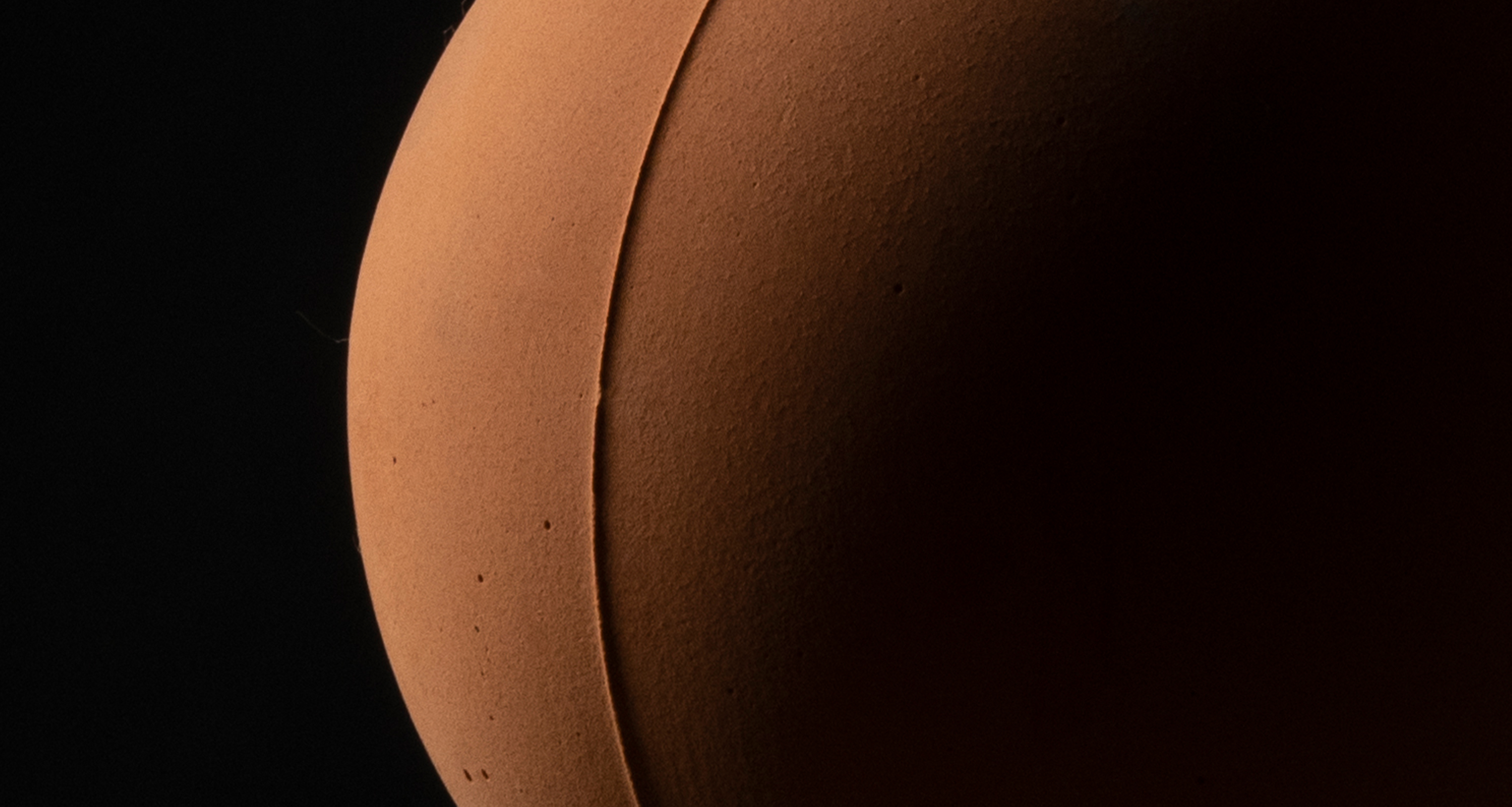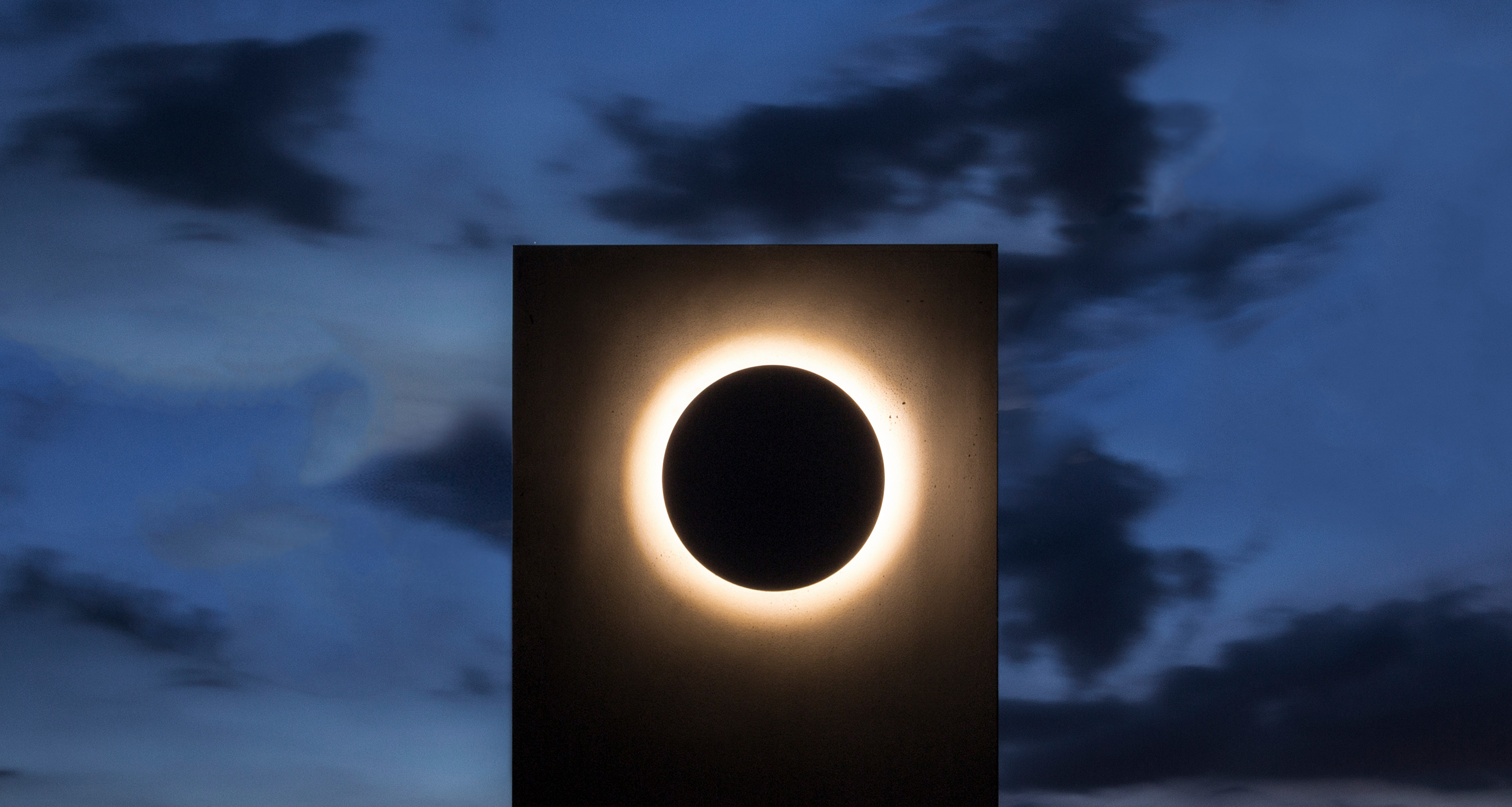
In the contemporary design world, self-described digital craftsperson Marcus Piper is the embodiment of individuality and experimentalism – refusing to conform to either title or trend. With a background in art, design, photography and typography, he discovered his creative niche within the field of digital design. Marcus now works on bringing complex, vector-based graphic designs to life in the real world, merging artistic craftsmanship with digital innovation.

Marcus’s latest collection, ITER 01, is based on this same philosophy, but with an added innovation. The digitally designed brutalist graphic patterns have been manufactured and finished in concrete. Informed by Marcus’s knowledge of industrial design, these three-dimensional artworks were crafted specifically for outdoor settings as a means of enhancing their kinetic illusion; as the day passes, the movement of light and shadow will create new visual perspectives and reveal the subtle nuances of his work.
As the sole distributor of ITER 01, Remodern is proud to introduce Marcus Piper.


We caught up with Marcus Piper to learn more about his craft and the vision behind his latest collection.
You describe yourself as a ‘Digital Craftsperson.’ Can you explain what this involves?
MP: Part of me is a communications designer and what I notice is most creatives with a diverse practice struggle to position themselves.
I refuse to be pigeon-holed or limited in what I can do. After a period of self-reflection, and considering where I wanted my practice to head, I came up with the term Digital Craftsperson. It is very specific and something I own as a brand.
It actually relates directly to my approach. Everything I do is crafted – though my tools are digital it is all done by hand. I am also a person, which may sound like an odd thing to say, but that says that there is someone behind the work and while I am a man – I would rather call myself a person.
Extending on this, I am of an age where I know how to load film into a Hassleblad, draw with a pen and really understand the analogue side of the process. The digital is just the new version of that. It is important future generations also experience the analogue.

What inspires your designs?
MP: My work, regardless of medium or audience, is about experience. User experience. I believe you will never see one of my works the same way twice because I work with light and perception. The work is the conduit or connector between the environment a work is in, the time of day and the observer.
I’ve worked, and engaged with, some of the iconic creatives of our times across design, architecture, typography and photography – some I take aesthetic inspiration from but for the most part I am inspired by their process. My aesthetic is my own, it happens in the moment – the process however carries a legacy.
What drives your creative process?
MP: Every good idea I have comes in nature. Based on the South Coast of NSW, I am able to spend a great deal of time in nature. More importantly, I get to see the way light works on surfaces, natural and made.
With every walk I return with an idea, or a resolution to a problem presented by these digital tools.
I want to know how things work, how to break them, how to find a new way to use them.
Perhaps it is a bit like my obsession with gradients. That comes from understanding the printing process and me wanting to find THE perfect way to make gradients of colour or shifts in perceived light.


Has your work in publishing influenced your creative process?
MP: When we launched POL Oxygen magazine in 2001 it became Globally recognised for its print production values winning a string of awards of many years. The perception was that it was incredibly expensive though in fact they textured embellishments that drew so much attention were existing printing techniques common to any magazine of that nature which I explored and used in different ways – adding little or no cost to the printing. This is something that studying Industrial Design engrained in my thinking.
My works today have brought this full circle, exploring materials and techniques in an art context. Really these works are just giant magazine covers.
How does your mantra, “Creating different. Always” inform your creative process and designs?
MP: There is no imagined outcome to my work, everything is a result of the process, the materials and the problem needing resolution.
Starting there everything will always be different. Yes, there is a recognisable aesthetic to the majority of my works – though it is actually a result of the process and exploring the possibilities of material and technology.
How does your ITER 01 Collection differ from any of your other works?
MP: The ITER series of works dives directly into this entire conversation I have with design, materials and process. It also extends on it.
Aesthetically it brings a more brutalist approach to my work which is traditionally finer, using pen and line weights that vary within microns. In this work my pen is a router bit and needs to accept the environmental scale it will be viewed in.
I am working on some major private and public installations in this style presently – the idea that an artwork can hang on a wall or BE the wall is of paramount interest to me.

You studied industrial design. How has your knowledge of industrial design informed your works, particularly your ITER 01 collection?
MP: Studying industrial design gave me a rather diverse skill set and extended my fascination with the way things work. As a kid I was an expert in pulling things apart. I went to uni to find out how to put them back together.
It also informed my exploration of materials, which is where every project starts. Asking the question “What can I do with this?” is the first step. The aesthetic comes later.
With the ITER series, when I realised I could create artworks in concrete, my first thought was “They belong outside.” By that I mean next to a pool, on a balcony or in a garden. Traditionally artworks suitable for the outdoors are sculpture, so why not break that convention given we spend so much of our time in those exposed spaces.
Industrial design is really a combination of engineering, aesthetics, manufacturing, and commerce. ITER opens an entirely new niche for my works as editioned outdoor art.
What really excites me is the potential for this approach to become part of a building – a wall or more three-dimensional feature.
How does Remodern align with your personal / professional brand?
MP: My ethos was informed in my teens. As a regional kid who didn’t quite fit I was drawn to independent, experimental music and through that was exposed to a DIY, non-conformist way of thinking which still resonates three decades on.
I see some of those same values in Remodern, as a brand and as people. To be open to do things a bit differently, work together and to push expectations are – in my mind – where we meet.
I also admire the other brands on the Remodern roster for having that same approach and pushing material possibilities.
Discover ITER 01 by Marcus Piper here.
Latest News:
Sign up to our mailing list to receive the latest Remodern news, first access to products and invitations to exclusive events.

